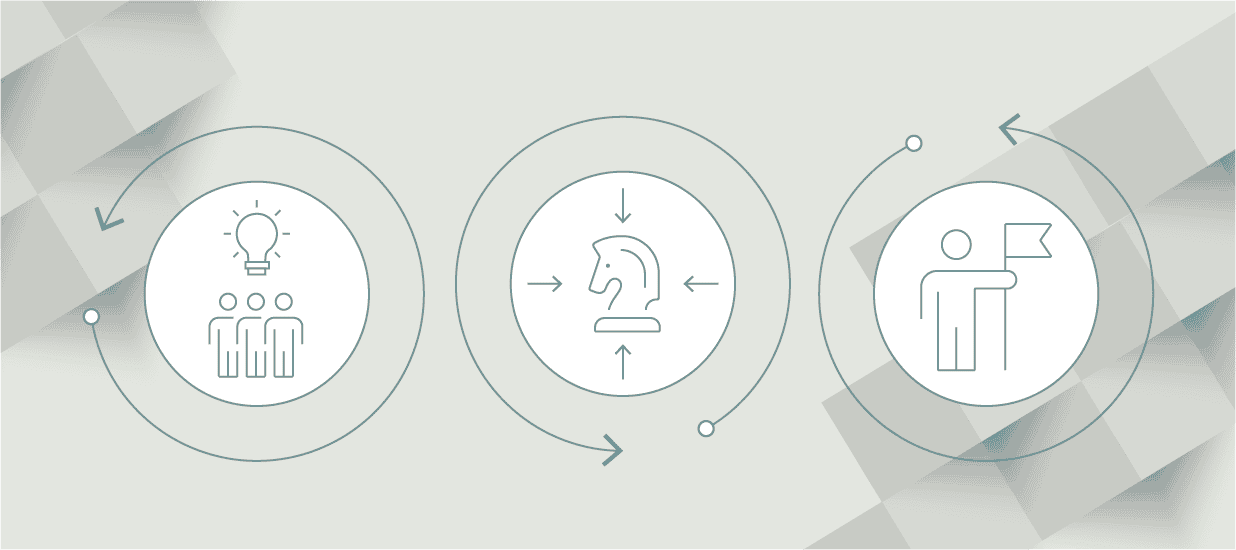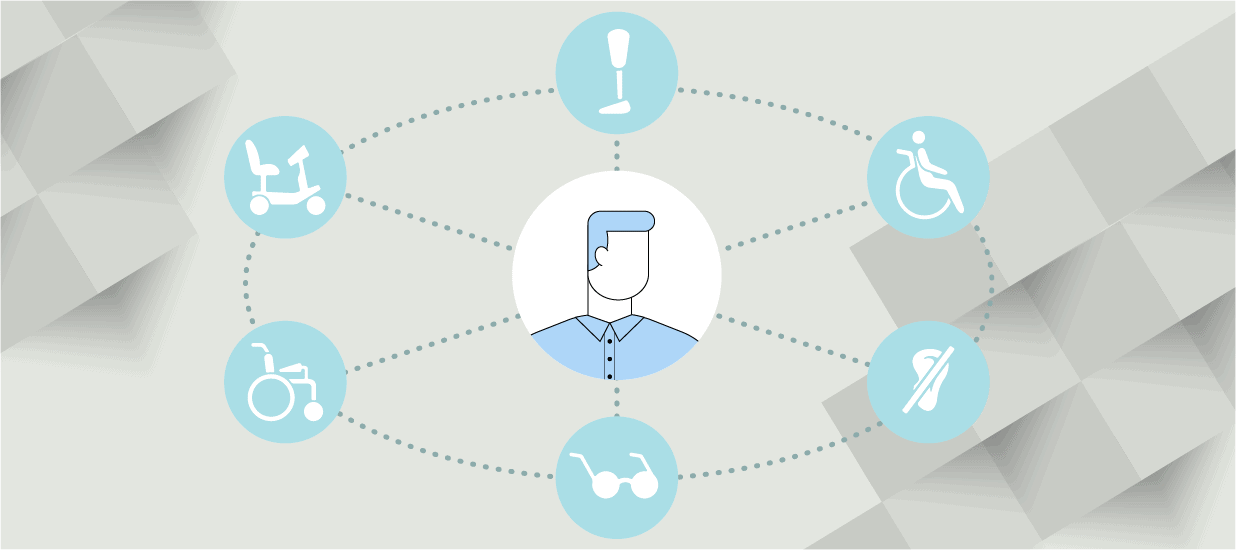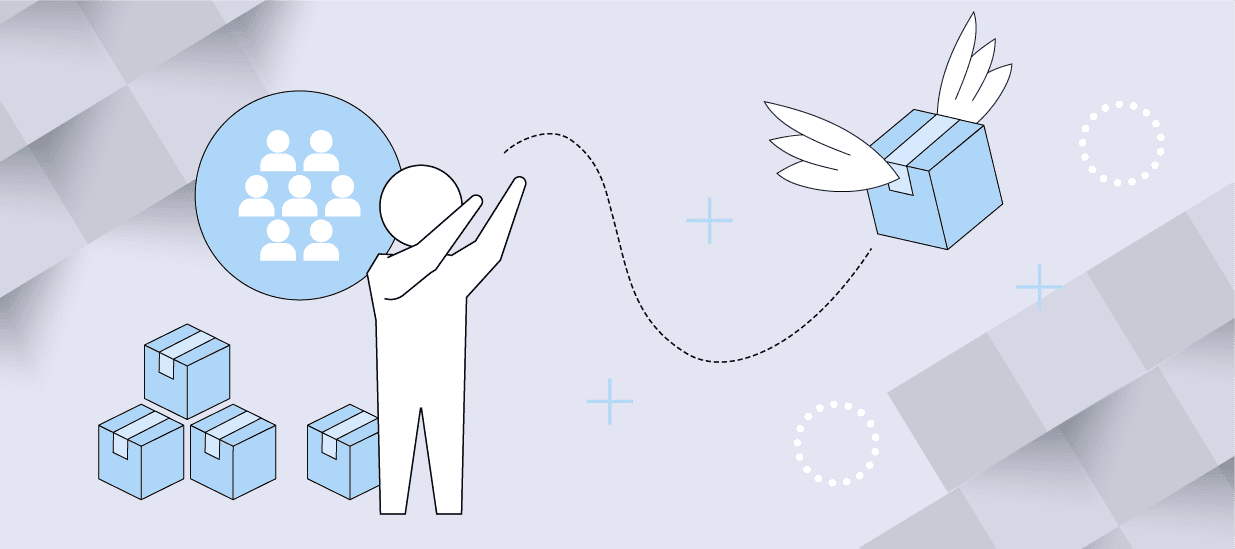7 minute read
Explore the Pragmatic approach to product innovation and learn about the three essential elements that teams need to achieve innovation.
We often mistake product innovation for invention—imagining it as a sudden spark of inspiration that reshapes industries. In reality, the most impactful innovations aren’t just creative or flashy; they solve real, pervasive market problems. Whether through small, incremental improvements or radical breakthroughs, successful product teams follow practical, repeatable processes to drive innovation. In this article, we’ll explore the different types of product innovation (with examples) and outline three essential elements that help teams turn great ideas into market-driven solutions.
Let’s explore how we achieve product innovation. Keep reading or use the links below to junk to a section that interests you.
What is product innovation?
In business, innovation is the ability to conceptualize, develop, and deliver products, services, processes, and business models for customers in the marketplace. More specifically, product innovation involves developing new products or advancing existing products with features, technologies, designs, or other ideas. These innovations should that add value for the customer and solve pervasive market problems.
Pragmatic product development dictates that truly innovative products should be unique in their market, identifying new frontiers for products and advancing beyond what their competitive set has to offer. By putting the market’s needs first, we can develop processes for product innovation that are practical, structured, and repeatable.
Successful product innovation is based on market discovery and research and uses creative problem-solving, impactful design, technological prowess, and effective product management. With these processes, product teams conceptualize effective solutions to market problems and deliver those as finished products. Innovation is driven by a desire to solve customer problems, stay ahead of competitors, and drive business growth.
What are the types of product innovation?
Incremental Innovation: Incremental innovation involves small tweaks, optimizations, or improvements to an existing product. The goal of incremental innovation is to make small enhancements to the performance, usability, or efficiency of a product without fundamentally altering the core product.
Example of Incremental Innovation: While rear backup cameras may seem like a recent innovation, they were first introduced in the early 1990s in the Toyota Soarer sedan. After it was introduced to the market, many other car manufacturers incorporated rear backup cameras into new vehicle models. In 2018, the National Highway Traffic Safety Administration (NHTSA) required that all new vehicles have backup cameras to enhance visibility and improve safety. Since their first introduction in the 1990s, backup cameras have improved in their visibility, range of view, response time, and durability. These are the types of small, incremental improvements that improve the overall product and, in this case, improve public safety.
Sustaining Innovation: While incremental innovation focuses on making small improvements to improve customers’ experiences with a product, sustaining innovation focuses on enhancing a product to stay competitive in a changing market, meet shifting customer expectations, and maintain a position in the market. Essentially, sustaining innovation helps products stay competitive in changing environments. Without sustaining innovation, products and companies may fall behind and find it difficult to catch up with the rest of the market.
Example of Sustaining Innovation: Apple AirPods Pro 2 have expanded beyond the simple Bluetooth headphone offering that the first generation of AirPods presented. In subsequent generations of the product, Apple has introduced health-related features, such as hearing assistance. This is a continued execution of Apple’s strategy of introducing health-related enhancements to products like iPhone and Apple Watch.
Disruptive Innovation: Innovation that creates new markets or significantly disrupts existing ones by introducing simpler, more affordable, or more accessible alternatives. This type of innovation focuses on addressing the needs of underserved or untapped markets. This should not be an innovation for its own sake, but to significantly improve the available product offerings for existing market segments.
Example of Disruptive Innovation: The investing platform Robinhood disrupted traditional stockbroker services by providing a platform where novice investors could perform their own commission-free trades. This app didn’t fundamentally change the mechanics of investing, but it reconceptualized how stock trading could take place and, in developing a solution, changed who was able to invest in the stock market.
Radical Innovation: Groundbreaking advancements introduce entirely new technologies or paradigms, creating industries that didn’t exist before. To be successful, radical innovation requires careful market validation. Even the boldest innovations should be backed by evidence of pervasive market problems that require an urgent solution for which customers are willing to pay. Simply put, radical innovations are game changers.
Example of Radical Innovation: A recent example of a radical innovation in biopharmaceuticals is the advent of the mRNA vaccine. While traditional vaccines use inactivated viruses or viral proteins to inoculate vaccine recipients against illnesses, mRNA vaccines harnessed a new approach by instructing human cells to produce a harmless piece of the virus to produce an immune response. mRNA vaccines were developed rapidly in response to the global COVID-19 pandemic and have demonstrated impacts on the speed to market of vaccines (reducing the timeline for vaccine development from years to months, even for new viruses). Additionally, the mRNA vaccine has applications for diseases that were previously thought uncurable, such as cancer and HIV.
The Pragmatic Approach to Product Innovation
While the types of product innovation are relatively consistent in the views of different frameworks and methodologies, the Pragmatic approach has some important caveats regarding innovation. First and foremost, market problems should be the starting point from which all innovation springs. Identifying market problems, validating them and understanding why they are worth solving, is essential to effectively innovating products. Beyond the mere problems that you want to solve, it’s important to understand who you are innovating for and how buyers and users might experience different problems. All products, features, and innovations should be prioritized according to the urgency and pervasiveness of the problems they solve and weighed against the market’s willingness to pay for a solution. By understanding these key factors, product teams can effectively prioritize
What are the essential elements of product innovation?
So, how can organizations achieve any or all of these types of innovation? There are three essential elements that can help set up organizations for successful, effective product innovation.
Element 1: A Culture of Innovation
A company’s culture is comprised of the behaviors, artifacts, and rules that influence how individuals behave within the company. This might include formal culture, including job descriptions, documented protocols, and organizational charts. Or, it can be informal, such as the social relationships and norms inside and outside the office. Together, these elements set the tone for whether a company innovates.
Effectively, culture is the tangible and intangible factors that influence how people behave. If a company culture encourages collaboration, questioning of norms, and experimentation, it likely has a culture of innovation. Companies with rigid organizational charts that discourage team members from sharing new ideas or testing new things likely do not have innovative cultures.
When companies fail to empower employees to innovate, then all other strategies to drive creative solutions will fail. Additionally, product innovation should be driven by the users the products will serve. Organizations should empower employees to engage with customers, investigate problems, and identify creative solutions to those problems. Individuals can influence culture by prioritizing marketing research and spending time with customers in the field. By spending time in the field, individuals can demonstrate that they prioritize the first-hand feedback and information that drives product innovation.
Finally, a culture of innovation must tolerate failure, because failure can present rich learning opportunities. The velocity of change in the marketplace may require an agile methodology or some other type of iterative process, rather than a long development cycle.
Element 2: Focus on Strategic Objectives
It’s not an effective use of time or resources to try to be everything to everyone. If we say “yes” to every new idea without considering the “why” behind the idea, we will be pulled in many different directions without delivering meaningful solutions.
In these situations, we are often responding to competitors’ actions, customers’ feedback, and higher-ups’ directives. In these situations, we are reactive, not strategic. These are not contexts in which innovation occurs.
There are many possible opportunities to pursue in the marketplace. The most successful organizations can discern what is valuable from what is merely distracting. For example, you might choose to focus on innovating for existing customers, attracting new customers within your target market, or pursuing new market opportunities. So, it’s important to decide where your time and energy is best spent. As a product manager or product marketer, if you respond to every individual request by building features, your strategy is probably reactive rather than focused.
If your company decides that in the next 18 months, 90% of its focus will be spent on existing customers and new customers, then your remaining resources will be focused on developing new ideas. That direction, however vague, provides a target for you to focus your team’s time and resources. When you can answer the question “Who are you going to delight, and what will you build to delight them?”, then you have achieved the necessary focus to innovate.
Element 3: Discipline to Follow Through
In these contexts, discipline is the ability to stay on track, delivering the products and features that meaningfully solve market problems. Even if an organization has an innovative culture, gathers insight and feedback from the market, and uses data to prioritize strategic objectives, that organization will fail to innovate if they don’t have the discipline to follow through on their plans.
Organizations that lack discipline run around in circles. The agile methodology was created to help teams respond to the velocity of change in the marketplace and incorporates requirements, design reviews, and user validation testing to manage those changing demands. Agile frameworks support iterative innovation by failing early, rapidly prototyping, and learning quickly.
However, because agile has so many activities and touchpoints there are incrementally more opportunities for people to come to the table with feedback and derail development. If your team makes changes before you’ve tested the original concept, you might find yourself in a position where you’ll never finish the project! For this reason, it’s essential to fully complete a sprint or iteration before considering new ideas or changes.
Author
-

The Pragmatic Editorial Team comprises a diverse team of writers, researchers, and subject matter experts. We are trained to share Pragmatic Institute’s insights and useful information to guide product, data, and design professionals on their career development journeys. Pragmatic Institute is the global leader in Product, Data, and Design training and certification programs for working professionals. Since 1993, we’ve issued over 250,000 product management and product marketing certifications to professionals at companies around the globe. For questions or inquiries, please contact [email protected].
View all posts








